Ask Ethan #66: Did we just find dark matter?
Not a chance. What we’ve found may be a mystery, but it’s definitely not our Universe’s missing mass.
“Time takes it all whether you want it to or not, time takes it all. Time bares it away, and in the end there is only darkness.” –Stephen King
But we are not quite at the end of time yet! It’s only the end of the week, which means it’s time for another Ask Ethan, and to give away another 2015 Year In Space Calendar! After another great week of questions and suggestions (and there were many good ones), congratulations are in order for last-minute submitter Joe Latone, who asks about a newly released story:
I’m seeing a lot of physics headlines like this over the past day, Researchers detect possible signal from dark matter. As you so eloquently do, would you explain a bit of the background and then distill this recent news for us?
Let’s give you exactly what you want and need, Joe!

First off, there’s the problem of dark matter. When we think about a cluster of galaxies — like the Coma Cluster, above — we have two ways of measuring the stuff that’s in it:
- We can look at the full spectrum of signals from the electromagnetic spectrum coming from it, including not only the light-emitting stars but also light emitted and absorbed from other parts of the spectrum. These give us windows into the amount of gas, dust, plasma, neutron stars, black holes, dwarf stars and even planets present inside.
- We can look at the motion of the objects within the cluster — in this case, the individual galaxies — and use what we know about the laws of gravitation to deduce what the total amount of mass within is.
By comparing those two numbers, we can see whether all of the mass is accounted for by normal matter, or whether there needs to be something else that isn’t made of protons, neutrons and electrons.
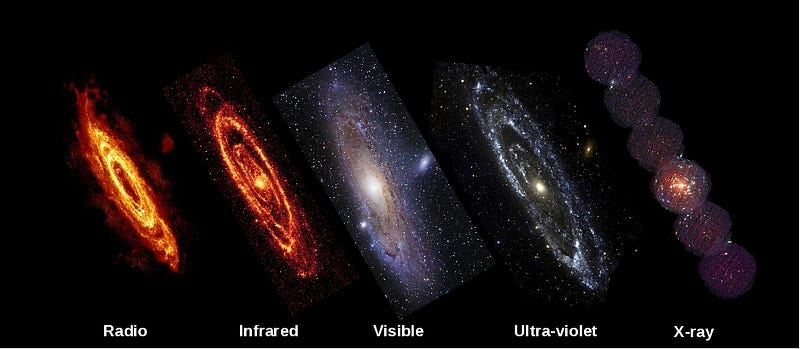
We can do the same thing for individual galaxies as well. Again, it’s easy to look at all the different, multiwavelength components of the galaxy. For both individual galaxies as well as clusters, we find a certain amount of mass in the form of stars, about five-to-eight times as much in the form of neutral gas, very little in the form of plasma (although there’s plenty of plasma in the intergalactic medium), and only a fraction of what’s present in stars in the form of all the other types of mass, combined. On average, there’s about seven times as much total normal matter in addition to the stars we see in all the large galaxies and clusters we look at.
But when it comes to the total amount of mass that we infer from gravitation, we find something surprising. Rather than needing about eight times as much total matter to account for the gravitational effects we see, which are the rotational speeds of galaxies at different distances in individual spirals and the speeds of the individual galaxies relative to the cluster center in clusters, we need something like fifty times as much!

This discrepancy, or the fact that we need about a total of five times as much matter in addition to the amount of normal matter that exists in our Universe, is known as the dark matter problem. There are many good sets of observations — including from distance/redshift measurements of standard astronomical candles, from giant surveys of the large-scale structure in our Universe, from observations of colliding galaxy clusters and from precision measurements of the Cosmic Microwave Background (the leftover glow from the Big Bang) — that show this is not a problem with the theory of gravity itself, but is rather due to the fact that there is a new type of matter in our Universe that exists in about five times the abundance of normal, atomic matter.
And this new form of matter — dark matter — among other things, does not interact with either matter or radiation through the electromagnetic force.
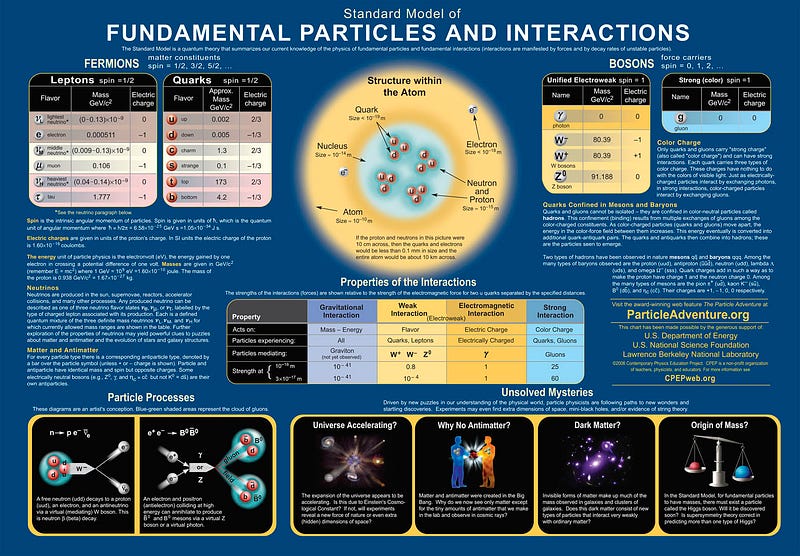
It’s also been established that whatever this dark matter is, it isn’t any of the conventional particles in the standard model. It isn’t a quark, it isn’t a boson, and it isn’t even a neutrino. Whatever it is, it’s got to be an entirely new type of particle, one that hasn’t been discovered yet.
Based on the gravitational properties that it’s required to have, as well, it’s expected to cluster in a giant halo, both around galaxies individually and around huge clusters in even larger, more diffuse spheroids.


For most models of dark matter, there’s one more property that’s expected of them: they ought to be their own antiparticle. Therefore, where the dark matter density is densest (at the centers of galaxies and clusters), there’s a chance they can annihilate. And if they do, the two annihilating dark matter particles will produce two photons, where the energy of each photon (to conserve energy and momentum) will correspond to the dark matter particle’s rest mass.
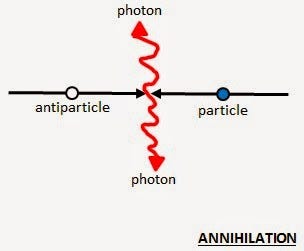
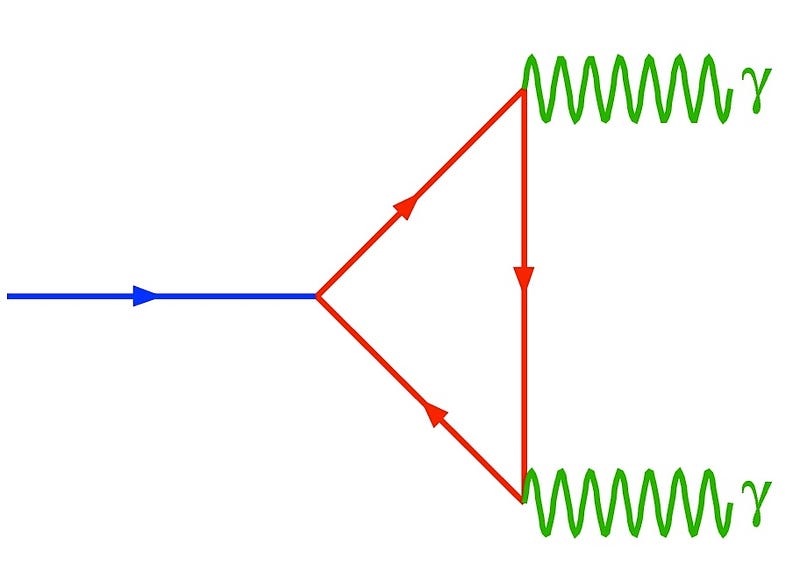
Sounds great, then, doesn’t it? All we have to do is point our high-energy telescopes — our X-ray and gamma ray observatories — at the centers of galaxies and clusters, and look for signals of this annihilation. This means looking for spectral “lines” of energy that don’t correspond to any known particles.
Piece o’ cake, right?
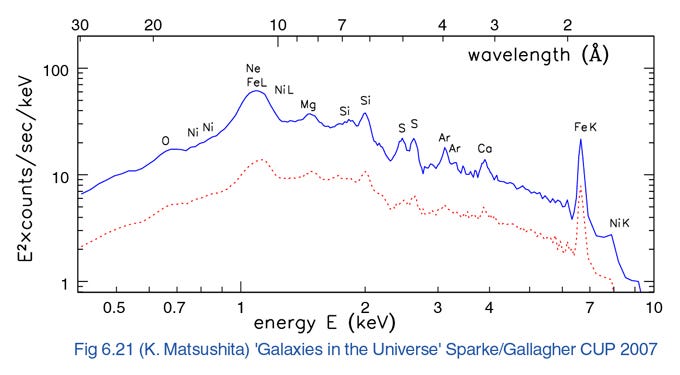
Not so fast. You see, one of the problems with our Universe is that there are all sorts of high-energy phenomena that are not well-understood here on Earth! Why? Because we don’t have the ability to recreate all the oddball phenomena that are out there in space, and we don’t know what causes many (or even most) of the conventional X-ray and gamma ray backgrounds we see.
In other words, there are plenty of X-ray and gamma ray sources out there that we already know we don’t understand all that well.
Well, as Joe points out, there was a discovery earlier this year of a new X-ray line — an energy source of about 3.5 keV — at the core of both the Andromeda galaxy and the Perseus galaxy cluster.

Is this due to something “mundane,” like from particles being accelerated around a supermassive black hole?
Or is this due to a new particle — like a sterile neutrino, for example — that’s responsible for the dark matter, annihilating and revealing its rest mass to be the (via E = mc^2) equivalent of 3.5 keV? (Or double that — at 7.0 keV — if this is a decaying particle instead.)

The news would love you to believe that the second possibility is worth considering, because, well, how awesome would it be to find dark matter? But not only is the evidence that this is even a real signal not at all compelling (under a 4σ significant detection even for the combined data set, when 5σ is the “gold standard” for discovery), but there is no way this could account for the dark matter in our Universe!
Why not? You see, this is a picture of the overdensities and underdensities in our Universe just 380,000 years after the Big Bang: from the Cosmic Microwave Background itself.

While it’s easy to think about the Universe as denser and younger during this time, it’s easy to forget that it was also hotter. This doesn’t just mean that the radiation was hotter, although that was true, but that the matter within it is also moving around at much greater speeds. This applies not only to normal matter, like atoms, but dark matter as well.
Why is this important? Because in order to clump together, and in order to support the formation of structure due to gravitational collapse, matter needs to be moving slowly enough or that collapse won’t occur. And if dark matter is too light, structure won’t form early enough to agree with our observations!

So what do we use to constrain this? Our best measurements come from something called the Lyman-alpha forest, which is a measure of how deep the gravitational potential wells of loosely-held-together gas clouds are dating back to when the Universe was very young. Sure, the densest objects will form stars, galaxies and even quasars early on, but there are going to be neutral gas clouds intervening, and they’re going to absorb some of that light at characteristic frequencies.
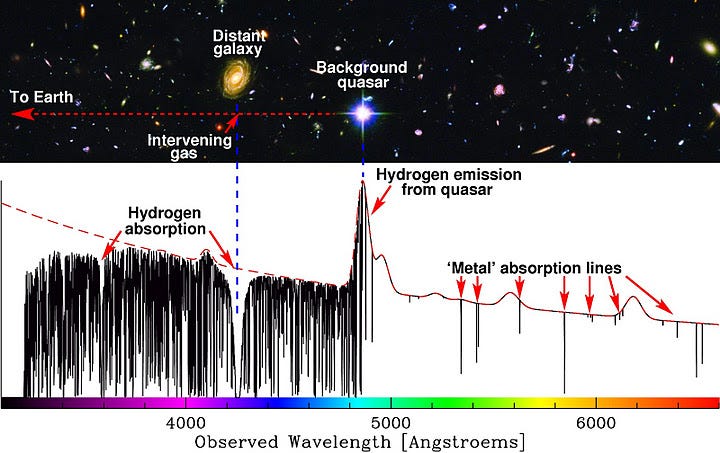
By looking at how deep these “forest lines” are, especially early on, we can constrain how light dark matter is allowed to be. Even under the most liberal of circumstances, we can see that the absorption lines are incredibly strong — consistent with dark matter being incredibly cold — which means it has to be at least above a certain mass threshold.

Well, what is that threshold? It has to be, at this point in time, heavier than about 10 keV, based on the strength of the observed absorption lines. In other words, about a factor of 3 heavier (or 50% heavier, for a decaying particle) that this supposed “dark matter signal” is!
Don’t get me wrong, the discovery of a potential new X-ray line is very interesting, and could be a window either into new astrophysics or, potentially (if a bit fantastically and unlikely), a new type of particle. It’s just that even if it turns out to be a new particle, that particle cannot be the dark matter, since it would screw up structure formation in the Universe (particularly on small scales), and our observations of those structures simply rules that scenario out.
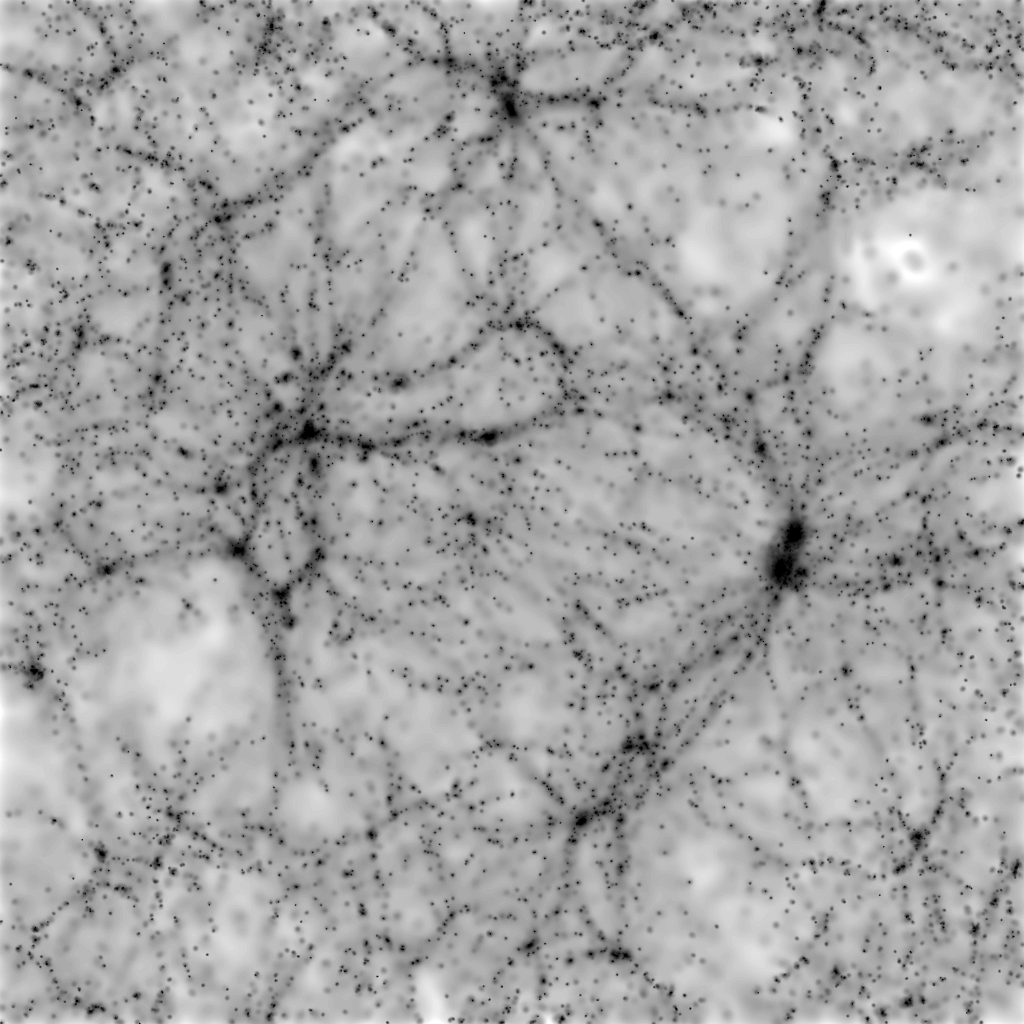
So it’s still interesting, but could it be the dark matter? Not a chance, not unless we’ve got something woefully wrong in multiple departments here.
Thanks for a great question, Joe, and send me your email address and I’ll make your 2015 Year In Space Calendar happen! We have two weeks left of winners and two more calendars to give away, so for your chance to win, send in your questions and suggestions here. The next Ask Ethan might be all about you!
Leave your comments at the Starts With A Bang forum on Scienceblogs!





